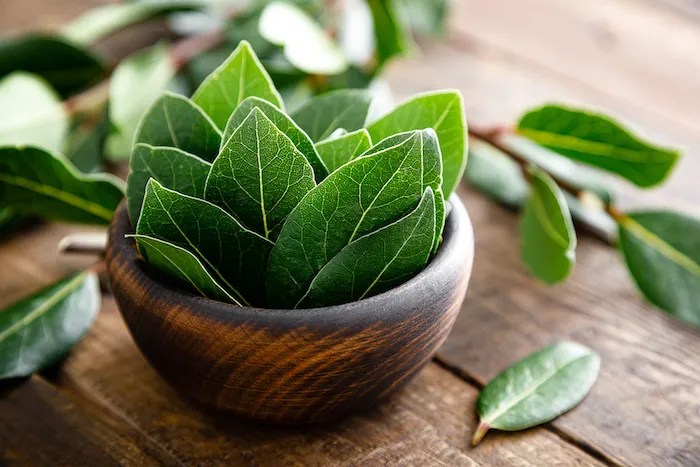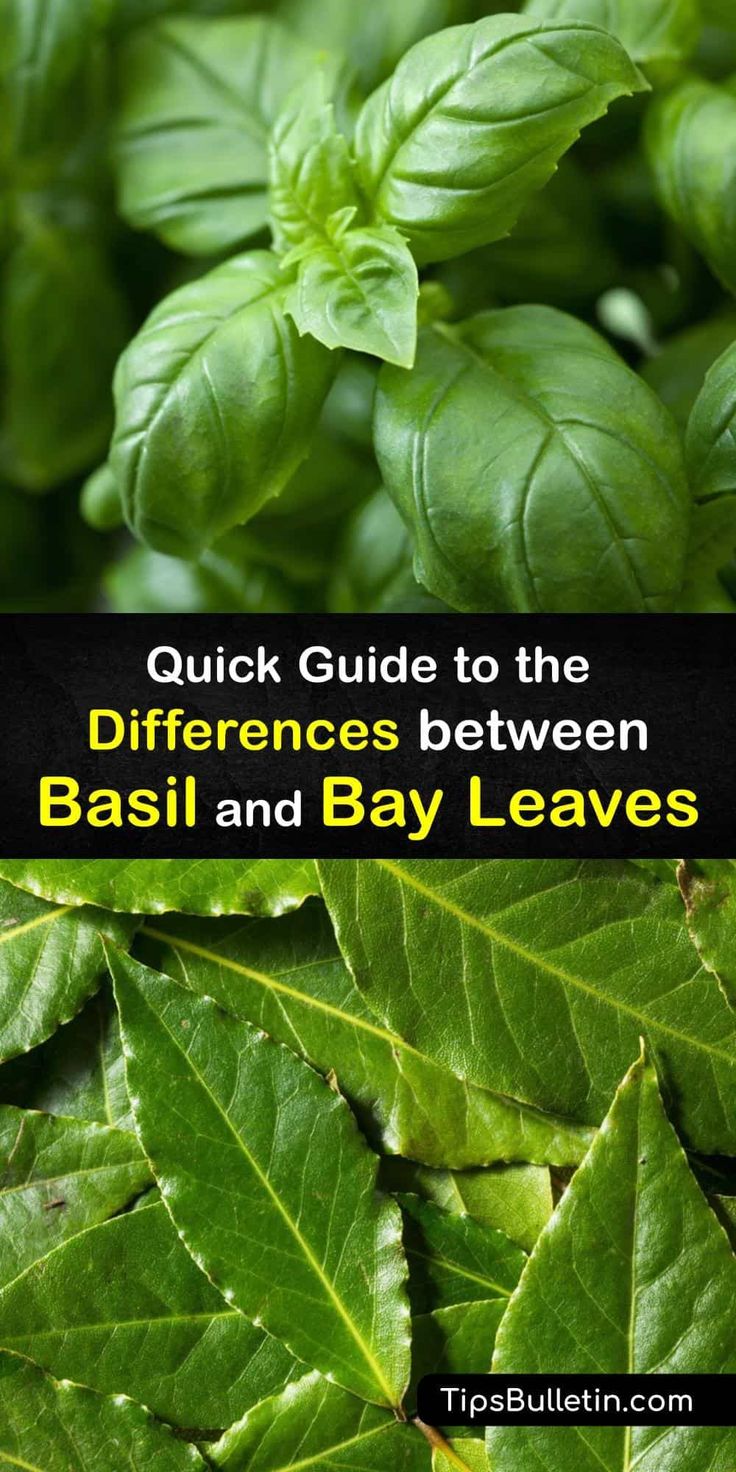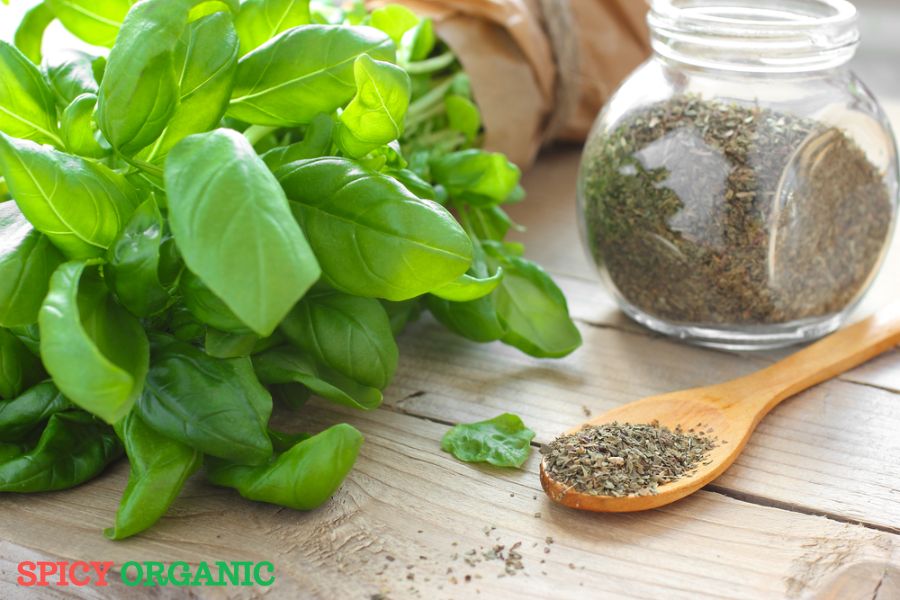Introduction

Basil and bay leaf are two popular herbs used in various cuisines for their unique flavors and aromatic properties. While both belong to the mint family, they have distinct characteristics that make them stand out. Basil is known for its minty, slightly sweet, and peppery flavor, making it a staple in Mediterranean and Italian dishes. On the other hand, bay leaves have a more subtle earthy and slightly bitter taste. Understanding the differences between these herbs is crucial when using them in recipes to achieve the desired flavors. In this article, we will explore the characteristics, health benefits, and culinary uses of basil and bay leaf to help you choose the right ingredient for your dishes.
Background Of Basil And Bay Leaf
Basil and bay leaf are both widely used herbs in various cuisines around the world. Basil, scientifically known as Ocimum basilicum, is native to Asia and has been cultivated for thousands of years. It is highly regarded in Mediterranean and Italian cooking for its distinctive flavor and aromatic properties.
On the other hand, bay leaf, also known as Laurus nobilis, has a long history dating back to ancient Greece and Rome. It is a staple in Mediterranean and Indian cuisines and is known for its earthy and slightly bitter taste.
Both basil and bay leaf have been valued for their culinary and medicinal uses for centuries, making them important ingredients in many traditional dishes.
Different Culinary Uses Of Basil And Bay Leaf
Basil and bay leaf are versatile herbs with distinct flavors that lend themselves to various culinary creations. Basil is commonly used in Italian cuisine, where it adds a fresh and bright flavor to pasta sauces, pizzas, and salads. It is also a key ingredient in pesto sauce. Bay leaf, on the other hand, is often used in soups, stews, and braises. Its earthy and slightly bitter taste enhances the overall flavor of these dishes. Both herbs can be used in marinades and infusions, adding a depth of flavor to meats and seafood.
Basil

Basil is an aromatic herb with a strong and distinctive flavor. It is commonly used in Italian cuisine, where it adds a fresh and bright taste to dishes like pasta sauces, pizzas, and salads. Basil is also a key ingredient in popular recipes like pesto sauce. With its vibrant green color and fragrant aroma, basil not only enhances the visual appeal of a dish but also adds a burst of flavor. It is rich in vitamins and minerals, making it a nutritious choice for cooking. Overall, basil is a versatile herb that can elevate the taste of various culinary creations.
Overview Of Basil And Its Characteristics
Basil is an aromatic herb with a strong and distinctive flavor. It is commonly used in Italian cuisine, where it adds a fresh and bright taste to dishes like pasta sauces, pizzas, and salads. Basil is also a key ingredient in popular recipes like pesto sauce. With its vibrant green color and fragrant aroma, basil not only enhances the visual appeal of a dish but also adds a burst of flavor. It is rich in vitamins and minerals, making it a nutritious choice for cooking. Overall, basil is a versatile herb that can elevate the taste of various culinary creations.
Health Benefits And Nutritional Value Of Basil
Basil not only adds flavor to dishes but also brings several health benefits to the table. It is packed with essential vitamins and minerals, including vitamin K, vitamin A, and manganese, which are vital for maintaining healthy bones and skin. Basil also contains antioxidants that help protect cells from damage caused by free radicals. Additionally, it has anti-inflammatory properties that may help reduce inflammation in the body. This versatile herb is also believed to have antibacterial and antimicrobial properties. Including basil in your diet can contribute to overall well-being and support a healthy immune system.
Bay Leaf

Bay Leaf is an herb derived from the leaves of the Laurus nobilis tree. With its distinct aromatic flavor and sharp, bitter taste, Bay Leaf is a popular addition to various culinary dishes. It is commonly used in soups, stews, and braises to add depth and complexity to the flavors. Bay Leaf also has a long history of medicinal use due to its anti-inflammatory and antioxidant properties. Rich in essential oils, minerals, and vitamins, Bay Leaf offers several health benefits, including aiding digestion and improving respiratory health. Its unique flavor and health benefits make Bay Leaf a valuable ingredient in the kitchen.
Overview Of Bay Leaf And Its Characteristics
Bay Leaf, derived from the leaves of the Laurus nobilis tree, is known for its distinct aromatic flavor and sharp, bitter taste. These leaves are typically dried and used in cooking to enhance the flavors of soups, stews, and braises. Bay Leaf is characterized by its elongated shape and olive green color. It contains essential oils, minerals, and vitamins that contribute to its health benefits, including anti-inflammatory and antioxidant properties. Bay Leaf is widely recognized for its ability to aid digestion and improve respiratory health. Its unique flavor and versatile uses make it a staple in many culinary recipes.
Health Benefits And Nutritional Value Of Bay Leaf
Bay Leaf not only adds flavor to dishes, but it also offers various health benefits. Rich in vitamins A, C, and B6, as well as minerals like iron, magnesium, and potassium, Bay Leaf promotes overall well-being. It contains essential oils, such as eucalyptol and cineole, known for their anti-inflammatory and antioxidant properties. Bay Leaf aids digestion by reducing bloating and soothing an upset stomach. Additionally, it can improve respiratory health by alleviating congestion and reducing coughs. Incorporating Bay Leaf into your diet can enhance not only the taste but also the overall health benefits of your meals.
Flavor Profile

Bay leaves have a distinct and earthy flavor with a slightly bitter taste. They release a woodsy, floral, and herbal essence when cooked, adding depth and richness to soups, stews, and sauces. On the other hand, basil offers a sweet and slightly peppery taste with hints of clove and anise. It is known for its fresh and aromatic flavor, making it a versatile herb in Italian, Mediterranean, and Asian cuisines. The unique flavors of bay leaf and basil contribute to enhancing the taste and aroma of different dishes, providing a delightful culinary experience.
Distinct Flavors Of Basil And Bay Leaf
Basil and bay leaf offer distinct and unique flavors that enhance the taste of various dishes. Bay leaves have an earthy flavor with a slight bitterness, releasing a woodsy, floral, and herbal essence when cooked. On the other hand, basil provides a sweet and slightly peppery taste, with hints of clove and anise. Its fresh and aromatic flavor adds a burst of freshness to dishes. These contrasting flavors of basil and bay leaf contribute to the complexity and depth of different recipes, creating an unforgettable culinary experience.
Comparison Of Taste And Aroma
Both basil and bay leaf have distinct taste and aroma profiles. Basil offers a sweet and slightly peppery taste, with hints of clove and anise. Its aroma is fresh and aromatic, adding a burst of freshness to dishes. On the other hand, bay leaves have an earthy flavor with a slight bitterness. When cooked, they release a woodsy, floral, and herbal essence. While both herbs provide unique flavors, basil’s taste and aroma are more vibrant and pronounced compared to the subtle and earthy notes of bay leaf.
Culinary Uses

Bay leaves and basil have distinct culinary uses in various dishes. Bay leaves are commonly used in long-simmered dishes like stews, soups, and braises, as they add a deep and flavorful aroma. They are usually added whole and then removed before serving. On the other hand, basil is versatile and can be used in a range of dishes. It is often added as a garnish to pasta, salads, and pizza, or chopped and mixed into sauces, dressings, and marinades to infuse a fresh and aromatic flavor. Both herbs bring unique and complementary flavors to different recipes, enhancing the overall taste and aroma.
Various Dishes That Incorporate Basil
Basil is a versatile herb that adds a fresh and aromatic flavor to a wide range of dishes. It is commonly used as a garnish in pasta and pizza, where its bright green leaves provide a burst of freshness. Basil is also a key ingredient in pesto sauce, adding a rich and herbaceous flavor to this classic Italian dish. Additionally, it can be chopped and mixed into salads, stir-fries, and marinades, enhancing the overall taste and aroma of these dishes. Its delicate flavor pairs well with tomatoes, making it a popular ingredient in caprese salads and tomato-based sauces.
Various Dishes That Incorporate Bay Leaf
Bay leaf is a versatile herb that is used in a variety of dishes to add a deep and aromatic flavor. It is commonly used in slow-cooked dishes such as soups, stews, and braises, where it infuses the food with its earthy and woodsy taste. Bay leaf is also a key ingredient in many Mediterranean and Indian recipes, including biryani, curries, and tomato-based sauces. It can be added whole or crushed to release its flavor, and is typically removed before serving. The distinct taste of bay leaf enhances the overall flavor profile of these dishes, making them more flavorful and fragrant.
Conclusion

In conclusion, both basil and bay leaf have their own distinct flavors and aroma, making them valuable ingredients in various culinary creations. Basil adds a fresh and herbaceous taste to dishes, while bay leaf provides a deep and earthy flavor. Understanding the unique characteristics of each herb allows cooks to choose the right ingredient for different recipes. Whether you’re preparing Italian pasta sauce with basil or a slow-cooked stew with bay leaf, these herbs elevate the overall taste and texture of your dishes. So, embrace the flavors of basil and bay leaf and experiment with different recipes to enhance your culinary experiences.
Summary Of The Key Differences Between Basil And Bay Leaf
Basil and bay leaf are two versatile herbs with different characteristics. Basil has a sweet and peppery taste with hints of clove and anise, while bay leaf has a subtle earthy flavor with a slightly bitter taste. Basil is commonly used in Italian, Mediterranean, and Asian dishes, adding freshness and aroma. On the other hand, bay leaf is often used to add depth of flavor to soups, stews, and sauces. Understanding these differences allows cooks to choose the right herb for their recipes, enhancing the overall taste and aroma of the dish.
Choosing The Right Ingredient For Different Recipes
When it comes to choosing between basil and bay leaf for different recipes, it’s important to consider the flavor profile and culinary application of each herb.
For recipes that require a fresh and vibrant taste, basil is the go-to choice. Its sweet and peppery flavor pairs well with tomatoes, salads, pasta dishes, and even cocktails.
On the other hand, bay leaf is ideal for adding depth and complexity to dishes like soups, stews, and sauces. Its subtle earthy flavor infuses the dish as it cooks and helps enhance the overall taste.
Ultimately, the choice between basil and bay leaf depends on the desired flavor and aroma you want to achieve in your recipe.
Frequently Asked Questions about Basil vs Bay Leaf
Q: What is the difference between basil and bay leaf?
A: Basil and bay leaf are both popular herbs used in cooking, but they have distinct flavors and uses. Basil has a sweet, fresh taste, while bay leaf has a more pungent, earthy flavor.
Q: Can I use basil instead of bay leaf in recipes?
A: No, basil cannot be used as a substitute for bay leaf in recipes that specifically call for bay leaf. The two herbs have different flavor profiles and using basil as a replacement will significantly alter the taste of the dish.
Q: What dishes is basil commonly used in?
A: Basil is a versatile herb that is commonly used in Italian cuisine, especially in pasta sauces, pesto, and Caprese salad. It complements tomato-based dishes and pairs well with cheese, fish, chicken, and vegetables.
Q: What dishes is bay leaf commonly used in?
A: Bay leaf is often added to soups, stews, and slow-cooked dishes for its unique flavor. It enhances the taste of broths, stocks, braised meats, and bean-based dishes. Bay leaf is typically used as a whole leaf and removed before serving.
Q: Are basil and bay leaf interchangeable in any recipes?
A: While basil and bay leaf have different flavors and uses, there may be certain recipes where they can be interchangeably used to add an aromatic element. However, this is uncommon, and it is best to follow the recipe as indicated.
Q: Can I use dried basil instead of fresh basil in recipes?
A: Yes, dried basil can be used as a substitute for fresh basil in many recipes. However, it is important to note that the flavor of dried basil is more concentrated, so you will need to adjust the quantity accordingly. Fresh basil is preferred for its vibrant taste.
Q: Should bay leaf be eaten or removed before serving?
A: Bay leaf is generally not meant to be eaten and is usually removed before serving. The whole leaf is added to infuse flavor into the dish during cooking. It is important to be cautious of accidentally consuming bay leaf as it can be unpleasant to bite into due to its tough texture.
Q: Can I grow basil and bay leaf at home?
A: Yes, both basil and bay leaf can be grown in home gardens. Basil is often grown as an annual herb, while bay leaf is a perennial shrub. They require different growing conditions, so it’s important to research their specific cultivation requirements before starting your own herb garden.
Q: Can basil or bay leaf have any health benefits?
A: Both basil and bay leaf have been associated with certain health benefits. Basil contains antioxidants and has antimicrobial properties, while bay leaf is believed to aid digestion and have anti-inflammatory effects. However, it is important to consult with a healthcare professional for personalized advice.
In summary, basil and bay leaf are distinct herbs with different flavors and culinary uses. While basil is commonly used in Italian cuisine and complements various dishes, bay leaf is primarily added to soups, stews, and slow-cooked recipes for its distinct flavor. It is best to use each herb according to its specific role in a recipe to achieve the desired taste.

Everyone has had a recipe that looked great on paper but ended up burning once you got into the kitchen. Obviously, a recipe isn’t just about what ingredients go into it. Knowing how you prepare a dish has a strong impact on how it finally tastes.